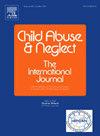战俘释放儿童心理急救的适应性:定性评价
IF 3.4
2区 心理学
Q1 FAMILY STUDIES
引用次数: 0
摘要
武装冲突期间绑架儿童是一个全球性的普遍问题。然而,旨在减轻从战争囚禁中释放的儿童的严重痛苦的干预措施仍然很少。目的:我们对以色列儿童和青少年(2.5-18岁)量身定制的PFA- cc -心理急救干预(PFA)进行了定性评估,该干预在他们从战争囚禁中释放后立即实施。目的是评估其可行性、保真度和从业经验。方法采用人种学方法进行评价。数据收集方法包括250小时的参与者观察和对一组从业人员(n = 37)的深入访谈,这些从业人员包括社会工作者、心理学家、精神病学家、护士和儿科医生。发现实践者描述了他们在囚禁后的环境中建立安全、促进平静和培养自我效能的技术。特别强调协助家庭传递困难的消息,尊重儿童的自主和自由选择,跟踪儿童处理创伤的速度,重新建立日常生活,并为重新融入社会做准备。对经典PFA模式的两个重要调整——使用过渡医院环境和采用以家庭为中心的方法——一直被认为是干预的优势。结论本研究提示PFA-CC是一种可行的、适宜的战争释放儿童早期干预措施。早期干预的关键意义包括:(1)采用辩证的方法,平衡儿童的自主性和界限;(2)创造一个专用的、封闭的、“无菌”的空间,以促进安全;(3)在家庭严重破裂和流离失所的情况下实施以家庭为中心的方法。本文章由计算机程序翻译,如有差异,请以英文原文为准。
The adaptation of psychological first aid for children released from war captivity (PFA-CC): A qualitative evaluation
Background
The abduction of children during armed conflict is a pervasive problem on a global scale. However, interventions aimed at alleviating acute distress in children released from war captivity remain rare.
Objective
We conducted a qualitative evaluation of PFA-CC—a Psychological First Aid Intervention (PFA) tailored to children and adolescents (aged 2.5–18 years) in Israel, administered immediately following their release from war captivity. The goal was to assess its feasibility, fidelity, and practitioner experiences.
Methods
We employed an ethnographic approach to evaluation. Data collection methods included 250 h of participant observation and in-depth interviews with a subset of practitioners (n = 37)—social workers, psychologists, psychiatrists, nurses, and pediatricians—who delivered the intervention.
Findings
Practitioners described techniques they employed for establishing safety, promoting calmness and fostering self-efficacy in the post-captivity context. Particular emphasis was placed on assisting families in delivering difficult news, respecting children's autonomy and free choice, following children's pace in processing trauma, re-establishing daily routines, and preparing for reintegration. Two important adaptations to the classical PFA model—the use of a transitional hospital setting and the adoption of a family-centred approach—were consistently identified as intervention strengths.
Conclusions
Our study suggests that PFA-CC is a feasible and appropriate early intervention for children released from war captivity. Key implications for early intervention include: (1) adoption of a dialectical approach that balances children's autonomy with boundaries; (2) creation of a dedicated, enclosed, and ‘sterile’ space to foster safety; (3) implementation of a family-centered approach amid acute family disruption and displacement.
求助全文
通过发布文献求助,成功后即可免费获取论文全文。
去求助
来源期刊

Child Abuse & Neglect
Multiple-
CiteScore
7.40
自引率
10.40%
发文量
397
期刊介绍:
Official Publication of the International Society for Prevention of Child Abuse and Neglect. Child Abuse & Neglect The International Journal, provides an international, multidisciplinary forum on all aspects of child abuse and neglect, with special emphasis on prevention and treatment; the scope extends further to all those aspects of life which either favor or hinder child development. While contributions will primarily be from the fields of psychology, psychiatry, social work, medicine, nursing, law enforcement, legislature, education, and anthropology, the Journal encourages the concerned lay individual and child-oriented advocate organizations to contribute.
 求助内容:
求助内容: 应助结果提醒方式:
应助结果提醒方式:


